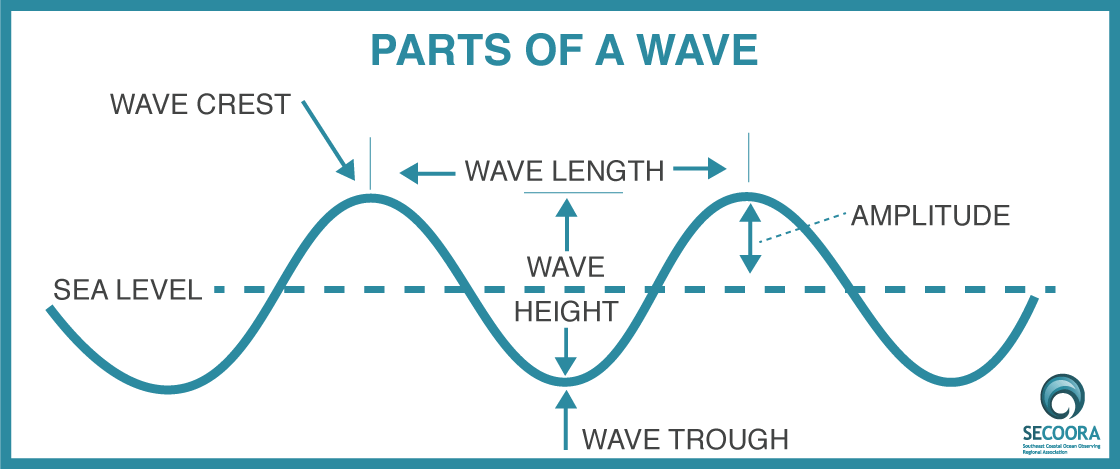


The maximum size of waves will depend upon three factors: wind speed, wind duration, and the fetch, which is a measure of the size of the area over which the wind is blowing.

The more wind there is, the more and bigger waves there will be. The time that elapses between successive wave crests is called the period. Their height is called amplitude, while the distance between successive crests is called wavelength. Scientists measure several aspects of waves. In any group of waves, there will be several peaks called crests that are separated by low points called troughs. Through the forces of friction and pressure, wind transfers energy to the surface of the sea, creating first ripples and eventually the swells we call waves. Oceanographers who study waves will tell you they're the result of something else that starts with a “w": wind! If you've ever blown on a hot bowl of soup and noticed the ripples caused on the surface by your breath, then you already have an idea of how wind creates waves in the ocean.Īlthough certain waves called tsunamis can be created by underwater earthquakes, most waves result from the work of wind on the ocean's surface. Science can and indeed does provide the answer to what causes waves. All you have to do is sit back and relax at the water's edge, as wave after endless wave takes away the heat and stress of the day.īut where do all those endless waves come from? Is there a giant sitting in the ocean on the other side of the world, kicking his feet to make round after round of waves? Or perhaps there's an underwater wave machine that runs night and day to create those never-ending whitecaps? Or could science provide the answer to the question of waves? If you've ever been to the ocean and spent time on the beach, you know that there are few joys as precious as feeling waves crash all around you, cooling your body on a hot summer day. She utters those magic words and you're off, diving into the surf in search of a wave to ride back to shore. You've just been waiting for the lifeguard on duty to give the go ahead. Surf's up! Those are the words you've been waiting to hear.


 0 kommentar(er)
0 kommentar(er)
